Geofencing is one of the most exciting tools we’ve seen take off in recent years, and it’s no surprise why. For businesses, both big and small, the power of geofencing lies in its ability to connect with consumers at the right time and in the right place. We’ve had countless discussions with other marketing professionals and business owners about how to best use geofencing, and we’ve seen its impact firsthand. Whether you’re a local business trying to attract foot traffic or a national brand looking for regional engagement, geofencing can be a game-changer for your company.
Let’s walk through five ways geofencing can work for your company, with real-world examples to spark some ideas.
1. Target Competitors’ Customers
Geofencing allows you to set up virtual boundaries around a specific location. One of the most effective strategies is placing a geofence around a competitor’s store. When a potential customer enters the geofence, they receive an alert or ad from your business, offering an incentive to switch.
Example: Let’s say you own a local coffee shop. You could set up a geofence around the popular chain coffee shop down the street. When customers enter the competitor’s store, they might get a push notification from your app offering a 20% discount if they head over to your location instead.
It’s a bold move, but it works. Competitor conquesting, as it’s often called, is a smart way to poach customers who are already interested in your type of product but might not have considered your business yet.
2. Boost Event Engagement
Another powerful way to use geofencing is to engage attendees at events. Whether it’s a local festival, sports game, or business conference, you can set up a geofence around the event location. This allows you to send notifications or ads to people who are already in a heightened state of interest, increasing the likelihood of conversions.
Example: A fitness brand we worked with wanted to boost engagement at a marathon. We set up a geofence around the event area. As runners and spectators arrived, they received messages promoting the brand’s booth and offering exclusive discounts on their sports gear. The campaign not only drove traffic to the booth but also saw a spike in app downloads and online sales in the following weeks.
3. Encourage In-Store Visits
Geofencing can be an excellent tool for driving foot traffic to physical locations. With this strategy, you set a boundary around a particular area and deliver messages to users in that region, offering promotions to encourage them to visit your store.
Example: A fashion retailer once set up a geofence around a popular shopping mall. They targeted shoppers within a one-mile radius of their store, sending out mobile coupons for 15% off if they visited within the next two hours. The time-sensitive nature of the offer created urgency, and the retailer saw a significant increase in store visits during that window.
This kind of real-time engagement is where geofencing shines, making it easy to connect with potential customers who are already nearby and potentially looking for a reason to stop in.
4. Enhance Loyalty Programs
If your company has a loyalty program, geofencing can add an extra layer of personalization and immediacy. You can set up geofences around your store locations, notifying loyalty members when they’re nearby. Not only does this remind them of your brand, but you can also send exclusive offers or rewards based on their proximity.
Example: Imagine a restaurant chain that geofences around its own locations, sending loyalty program members personalized offers when they come within a certain distance. Maybe it’s a free appetizer or a discount on their next meal. These notifications can even be customized based on the customer’s preferences or past orders, giving them an added incentive to stop by.
This strategy strengthens your relationship with loyal customers and encourages repeat visits.
5. Gather Rich Analytics and Insights
Beyond just driving traffic, geofencing is also a powerful tool for gathering data. You can track how many people enter a geofenced area, how they respond to your notifications, and even how frequently they visit certain locations. This data is invaluable for refining your future campaigns and understanding your audience’s behavior.
Example: A car dealership used geofencing to track foot traffic at a local auto show. By monitoring how many visitors entered the geofence and who responded to their offers, they gained insights into customer preferences and behaviors. They could see which models generated the most interest and use that data to follow up with targeted promotions.
This kind of actionable data can inform everything from your marketing strategy to your product development, making geofencing a vital tool for both engagement and insight.
Final Thoughts: Why Your Company Needs Geofencing
Geofencing isn’t just for big brands with huge marketing budgets. With the right strategy, businesses of all sizes can use it to increase brand awareness, drive foot traffic, boost engagement, and gather valuable customer insights. Whether you’re aiming to attract more customers or improve your existing marketing efforts, geofencing can help you reach your goals.
If you’re not yet using geofencing in your marketing strategy, you’re leaving a lot of opportunities on the table. Curious about how geofencing could work for your business? At Ambient Array, we specialize in helping companies harness the power of geofencing to drive results. Contact us today, and let’s discuss how we can create a customized geofencing campaign that works for you.


